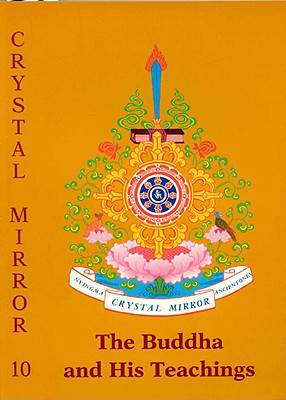
- Retrait gratuit dans votre magasin Club
- 7.000.000 titres dans notre catalogue
- Payer en toute sécurité
- Toujours un magasin près de chez vous
- Retrait gratuit dans votre magasin Club
- 7.000.0000 titres dans notre catalogue
- Payer en toute sécurité
- Toujours un magasin près de chez vous
Description
For Buddhists everywhere it is important to know who the Buddha is and appreciate the full significance of the knowledge he imparted. This is especially true of Western Buddhists. Today, as in the past, the words and acts of the Buddha relate to every moment of human experience. In this volume of the Crystal Mirror Series a path emerges that penetrates the pressures of modern life and reveals new dimensions of freedom. In the words of the Buddha himself we find practical teachings on developing mindfulness and compassion in the face of an uncertain world. Collected here are texts to guide the practitioner on this p;ath. Penetrating insights offered by Tarthang Tulku Rinpoche and the students he has trained over decades complement the traditional texts. Studying the Sūtras and śāstras can stimulate our inquiring minds and address essential questions: Who is the Buddha, where did he live, what vision inspired him, and how did he address the needs of all manner of beings? What relevance do the acts of the Buddha have to our modern day experience? And, what is the value of praise and devotion in our technological age?The Sūtras, viewed as an example and guide to awakening, clarify how to remove obstacles to complete, perfect enlightenment. These are the words of the Buddha taught during his lifetime.The Śāstras, written by great lineage masters, are treatises which attempt to outline and expand on the sutra teachings. They forge and clarify maps to enlightenment--meticulously constructed charts establishing the foundation for insight and illuminating each step of the path to freedom. The works of important Buddhist philosophers like Nagarjuna, Vasubandhu, and Dharmakirti are generally termed śāstras.Included in the section "The Speech of the Perfect Buddhas" are Sūtra exerpts, important lists (with titles in Tibetan and transliterated Sanskrit)-- The Five-fold Path, The Eleven Stages to the Path of Enlightenment, Eighty Inexhaustable Qualities of the Buddha, Twenty-one Characteristics of Dharmakāya, and Marks of a Great Being among others-- and the Sūtra openings with titles in Tibetan, Sanskrit, and transliterated Sanskrit. In presenting the life of the historical Buddha Śākyamuni, a time-line constructed from accounts in the traditional texts (the Vinaya and Sūtras) traces his twelve major acts and offers a general impression of his years of teaching and shaping the Sangha.
Spécifications
Parties prenantes
- Editeur:
Contenu
- Nombre de pages :
- 381
- Langue:
- Anglais
- Collection :
- Tome:
- n° 10
Caractéristiques
- EAN:
- 9780898002720
- Date de parution :
- 01-01-95
- Format:
- Livre broché
- Format numérique:
- Trade paperback (VS)
- Dimensions :
- 179 mm x 255 mm
- Poids :
- 848 g

Les avis
Nous publions uniquement les avis qui respectent les conditions requises. Consultez nos conditions pour les avis.





